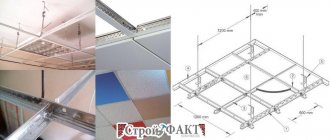SHARE ON SOCIAL NETWORKS
FacebookTwitterOkGoogle+PinterestVk
It’s hard to imagine a modern kitchen without a dishwasher. Using this unit saves time and effort. Two steps are required to make the dishwasher ready for use: installation and connection. Before starting work, you need to determine a suitable location, and also take into account many small nuances, without which it will not be possible to carry out the work correctly.
Installing a dishwasher is a rather complex process with many small nuances.
Features of installing a dishwasher depending on its type
There are several options available to ensure harmonious integration of the dishwasher into the kitchen furniture. Most often, the dishwasher (DMM) is installed in the place that was previously selected for it. All devices of this type are divided according to their dimensions into three types:
In terms of size, dishwashers come in full-size, narrow and compact sizes.
- compact;
- narrow;
- full size.
Units that belong to the first group can accommodate a small number of cookware sets (up to 5). They are most often installed under the sink. Sometimes such models are located above the countertop. The width of these models is 60 cm. They are great for people living alone. Installing dishwashers of this type is not particularly difficult. This model can also be placed in a cabinet above the sink.
Narrow PMMs are so called because of their width, which is 45 cm. Such models are more spacious, since in other dimensions they are similar to full-size machines. The number of sets that can be loaded into such a device ranges from 6 to 10. Narrow models are divided into fully and partially integrated. They are installed in a kitchen unit, the doors of which act as facades. They can have dimensions of 45 and 60 cm. The front for the dishwasher is best purchased separately.
Full-size units have a width of 65 cm and a height of 90 cm. They have the largest capacity among all types of PMM. Devices can be integrated or installed separately from the headset.
Full size dishwashers are 90 cm high and 65 cm wide
Note! Having a pre-designed diagram describing the installation of the dishwasher greatly simplifies the task. The drawing can be prepared for a specific model, for example, for installing a Bosch dishwasher (or any other brand).
Most often, companies involved in the production of kitchen furniture provide a special place in which the future dishwashing device will be located. To do this, manufacturers take the dimensions of a narrow unit as a basis and add 5 or 10 cm (on each side) to these values. If a set of kitchen furniture does not imply the installation of a PMM, then it is best to purchase a separate device.
When choosing free-standing models, it is very important to understand one nuance: the appearance of the device body must be in harmony with the design of the kitchen space. If this rule could not be followed for one reason or another, then you should choose a place for installation in the immediate vicinity of the sink. Before starting work, be sure to carefully study the instructions indicating how to install the dishwasher. Bosch is the best choice for integrating with minimal effort.
The distance from the body of the dishwasher to the back wall must be at least 5 cm. This is a very important point, failure to comply with which will lead to failure of the machine, since there will be no good ventilation.
Most often, companies producing kitchen furniture provide a special place for a dishwasher.
How to install a dishwasher: choosing a location
Before you begin installing the dishwasher, you need to determine the location in which it will be located. It is worth considering several important points. The easiest way is to choose a place for models that are integrated into the kitchen set. Such devices are most often mounted in furniture modules, which belong to the first level (floor cabinets). An area with a small amount of space should be allocated for the dishwasher.
Compact models, if desired, can be built in a place that is most convenient to reach. They can be placed at chest level in a furniture set. Errors when choosing the location of the PMM often lead to difficulties with operation and maintenance, so first of all it is necessary to build on the type of dishwasher and the features of a particular device. This will allow you to integrate it into the kitchen ensemble as harmoniously as possible.
Note! Chinese models may have design features that influence the integration process. For example, some Medea dishwashers are equipped with special adjusting screws that are responsible for the degree of tension of the facade.
The most suitable place to install a dishwasher is the module located next to the sink. This is quite logical, since all the water supply and sewerage units that are necessary to connect the PMM are concentrated in this area. By choosing this location, there will be no problems connecting hoses to all necessary communications.
The module located next to the sink is considered the most suitable place to install a dishwasher
Models from foreign manufacturers (for example, Electrolux) are best suited for quick installation. Installing a dishwasher is often accompanied by a variety of minor setbacks. Problems arise much more often if you need to choose a place for a dishwasher in a finished set. In such a situation, there is only one thing left to do - adjust the dimensions of the furniture to the dimensions of the device. If this fails, then you will have to dismantle individual modules of the kitchen ensemble.
Thus, the most important rule is to select in advance a suitable place in which the dishwasher will be placed. This rule applies not only to dishwashers, but also to other kitchen appliances. The sketch of the kitchen set should be drawn up second.
Connection to PMM communications
A dishwasher from the brands Bosch (Bosch), Electrolux (Electrolux), Beko (Beko), Hotpoint Ariston (Hotpoint Ariston), Midea (Medea), Siemens (Siemens), Hansa (Hansa) is a wonderful helper in the house. But buying this equipment is only half the battle.
Next, you will need to connect the dishwasher to the water supply and sewerage, as well as to the electrical network. The cost of such work, especially in Moscow, is quite high. Therefore, if you have the skills, it makes sense to do them yourself.
Before installing the dishwasher in place, it is better to double-check the accessibility of communications and the required length of the hoses and power cord.
Connecting a dishwasher is a matter that requires plumbing skills. And the more experience you have in this type of work, the better. You must understand that the durability and trouble-free operation of your dishwasher depends on the quality of installation.
Before you begin work, be sure to check that you have all the necessary tools and equipment.
In order to properly connect the dishwasher, in addition to a screwdriver and pliers, you may need a drill, a level, and also:
- Epoxy adhesive
- clamps;
- siphon with an additional branch;
- the tee tap is brass or bronze, but not silumin;
- wrench;
- wire cutters;
- grounded socket.
- Adjustable wrench - needed to install a tee on the water supply for connection. PMM if it's not already worth it
- Phillips screwdriver - for hanging the facade, if necessary.
As for consumables, fum tape and plumbing tape for fixing the drain hose may be useful.
The main thing is to check whether you have a flexible hose for supplying water to the PMM and how much of it is available. It must be of sufficient length for the chosen installation location, it is better to check this carefully in advance.
Such a hose can also be equipped with an aquastop protective mechanism, which prevents the risk of leakage when ruptured - such hoses are usually equipped with more expensive PMM models.
Also, if you have nowhere to connect the water intake hose, you will need to buy an additional tee and install it on the water supply to the kitchen faucet, or separate it from the manifold in the riser.
The drainage from the riser is carried out as follows:
- Connect the adapter for polypropylene pipes to the free outlet of the manifold;.
- Lay a route to the installation site of the dishwasher, if necessary; using connecting fittings and elbows;.
- Finally, mount the water socket and screw a metal elbow with a ¾-inch external thread into it;
- All that remains is to connect the supply hose supplied with the machine.
If it is impossible to connect a separate pipe to the place where the dishwasher is installed, then there is the option of connecting the kitchen sink mixer into the gap.
To do this you will need a tee with a tap:
- It is necessary to first turn off the water supply in the riser and release the remaining excess pressure by opening the faucet in the sink.
- Now you can install the tee under the sink.
Do not forget to seal all threaded connections with FUM tape.
Installing a built-in dishwasher: preparing tools and materials
Most manufacturers of dishwashers include instructions for the units. Such manuals may indicate what tools and materials are needed to integrate the dishwasher into the kitchen ensemble. However, such instructions are not always included. Before starting work, you need to prepare the following tools:
- electric drill;
- screwdriver;
- Screwdriver Set;
- chisel;
- regular hammer;
- pliers;
- level.
The tools that will be needed to install the unit are an electric drill, screwdrivers, a screwdriver, a hammer, a level, and pliers.
Instead of a drill, you can use a hammer drill to install the dishwasher yourself. Screwdrivers should be prepared not only with flat tips, but also with Phillips heads. It is quite inconvenient to use a regular level in such work. Experts recommend using laser, if possible. You will also need to prepare some auxiliary tools: a pencil, a tape measure and a construction square.
Helpful information! Installing a dishwasher into furniture is one of the stages of its integration. If it is necessary to connect the PMM to communications, then the list of tools requires addition.
The parts that will be used to connect the device should not be used, since their reliability is significantly less than that of new ones. It is especially not recommended to use used parts when installing Bosch dishwashers. It is quite problematic to carry out all stages of installation and connection with your own hands, so it is recommended to study photo and video materials related to this issue.
Dishwasher installation rules and some useful tips
Before purchasing and installing a dishwasher, you need to measure the location that was previously chosen for it. The check is carried out using a construction tape. An even better solution is to take a measurement before purchasing the unit. How to find out the size of the PMM? As a rule, the dimensions of products are indicated on the websites of manufacturers and companies involved in their sale. If the size of the niche exceeds the dimensions of the dishwasher, then you can adjust the height of the device using the legs.
Before purchasing a dishwasher, you need to measure the location you have chosen to install it.
It is very important to remember that some PMM models are highly sensitive to tilt angles. Even at the slightest angle (2 degrees), such dishwashers may experience interruptions in operation. This category includes products from Hotpoint Ariston, as well as Indesit dishwashers. The instructions that come with them are a must read, as they contain many important nuances, including those related to installation.
Before proceeding with the integration of the device, it is recommended to place a metal plate under the tabletop. This measure is necessary to protect the wooden material from steam. Devices that are fully integrated into furniture most often include such a plate, but it is easy to make it yourself.
You can install a compact dishwasher under the countertop. Some of the best devices of this type are models produced by. Installing a dishwasher of this type is very simple, due to its size.
Most dishwashers come with special parts that are used when hanging the door. To carry out installation correctly, it is recommended to check preliminary calculations, wiring diagram and other details several times in a row.
Special parts are included for hanging the door
Optimal dimensions of dishwashers for installation
The largest percentage of dishwashers are 60 cm wide. Such devices can cover the needs of any family. There are also narrow models suitable for embedding, the width of which is 45 cm. It is worth saying that devices with a width of 448 mm have good functionality, not much different from standard models.
The height of narrow dishwashers ranges from 815 to 875 mm. These values were not taken by chance - they were selected in accordance with the standard height of the cabinets included in the kitchen set. When drawing up an installation diagram for a dishwasher, it is worth taking into account not only its dimensions, but also the small margin that the niche should have.
Note! If the kitchen furniture was made to order, you should be careful. Standardized devices may not be suitable for this type of headset. It is recommended to take your own measurements of the niches and compare them with the dimensions of the device.
The easiest way to integrate a 45 cm built-in dishwasher is to install such devices in a matter of hours. The depth of dishwashing units is most often 55 cm. On sale you can find models that differ in height and depth. You should pay attention to the dimensions before purchasing a PMM.
Optimal dimensions for installing dishwashers: height – 82 cm, width – 60 cm, depth – 58 cm
How to integrate a dishwasher into the kitchen: integration into the cabinet
The cabinet located next to the sink must have a width greater than 45 cm. In such a situation, there is no need to come up with complex installation diagrams; you just need to install it into the adjacent module. When purchasing products from some brands, you should be aware that they require the installation of a special siphon when connecting (for example, Electrolux devices). Videos of installing a dishwasher of this type can be easily found on the Internet.
To prepare the lower cabinet for installation, you will need to do several manipulations. First of all, you need to remove the transverse partitions (shelves) from the cabinet, and also dismantle the back wall. The bottom panel is removed only if necessary, for example, if the height of the module itself is not enough to accommodate the dishwasher. To fix the case, it will need to be positioned strictly in a vertical plane. For this, adjustable legs and a building level are used.
If you wish, you can call a specialist who will do the job professionally. However, this will come with additional costs. The cost of installing a dishwasher depends on many factors: model, location, technical difficulties, etc.
Don’t forget about the front panel, which performs a decorative function and contributes to the harmonious integration of the dishwasher into the kitchen set. The facade is usually made from a cabinet door. However, it can also be purchased separately (to order). Devices that are part of the partially integrated group do not require a decorative front panel.
To prepare the lower cabinet for installation, you will need to remove the transverse partitions and dismantle the back wall
Installing a dishwasher in a separate module
Sometimes there are situations when it is not possible to allocate free space for installing new kitchen appliances. In this case, you can place an order for a separate module that will complement the existing kitchen ensemble. However, the rules regarding its location are the same. It must be located in close proximity to water supply and sewerage.
Related article:
Built-in dishwasher: modern appliances for a comfortable life
Varieties of models according to installation method and dimensions. Functionality of compact devices. Manufacturers and prices.
Thus, it is possible to transfer equipment that was previously located near the sink into the new module, and integrate a dishwashing unit into the old one. In this case, everything will depend on the features of the installation. Built-in dishwashers must be leveled and secured. This is required to ensure that the device does not produce vibrations during operation. If you ignore the fixation of the PMM, then it will make a lot of noise and move the cabinet.
Helpful information! The hoses located behind, in the space between the rear wall of the dishwasher body and the wall, must run parallel to the surfaces. Access to them must be free so that problems do not arise if it is necessary to replace a failed element.
When connecting certain models, you must carefully read the instructions. Bosch dishwashers, as well as other devices from popular brands, are sometimes quite difficult to integrate into an old set. To avoid having to change furniture, you need to study the issue of “compatibility” at the stage of choosing a PMM.
Access to hoses supplying and removing water in a separate module must be free
If the unit is located under a common kitchen countertop, maintenance becomes more complicated. A communication problem that arises in such a situation will require dismantling the dishwasher unit.
What to do if embedding is not practical
Some kitchen sets do not provide the possibility of installing a dishwasher. In addition, there may simply not be free space in the furniture. What to do in this case? In such a situation, it is best to purchase a freestanding model.
Dishwashing units of this type do not require complex integration work, so this option is perfect for people who do not want to spend a lot of time fiddling with the installation. There are three placement methods for freestanding devices:
- on the floor;
- into a niche;
- on the tabletop.
The best models, installed separately, are also produced by Electrolux. Installing a dishwasher of this type will not cause any particular difficulties. In this case, all work is reduced, as a rule, only to connecting to the power grid and other communications.
If it is not possible to install a dishwasher in your kitchen unit, you can purchase a separate model
You can completely remake some of the modules that are part of the kitchen ensemble. Transferring communications is also possible, but this is quite labor-intensive work. Usually this option is chosen last, when it is necessary to integrate a free-standing model and install a decorative facade on its front side.
Preparing communications
It's no secret that a built-in dishwasher needs a stable connection to the electrical network, a connection to the water supply (sometimes to both hot and cold water at once) and sewerage. It is better to prepare these communications at the very beginning of kitchen renovation. Let's start with electrics.
- Using a hammer drill and a chisel, we tap the wall for the electrical wiring.
- In the electrical panel we draw a three-wire wire and install the automatic switch.
- We connect a pre-prepared copper wire to the difavtomat and pull it into the kitchen, through a grooved channel to the location of the socket box.
- We hollow out a niche for the socket box, install it and remove the wire.
- We disassemble the moisture-resistant socket, connect it to the wires and screw it in place.
At first glance, nothing complicated, but in practice problems may arise, so if you do not have experience in handling electricity, contact a specialist. The connection to electricity has taken place, now it’s time to install the wiring for the water pipes. First, figure out how you will connect your dishwasher to hot and cold water or just cold. Most often, craftsmen connect “dishwashers” only to cold water - this is best.
- At the end of the outlet of the cold water pipe, install a tee (or a tee with a tap).
- We get two free leads, one will go to the sink faucet, and to the other we will connect the dishwasher inlet hose.
- All threaded connections must be taped with a foam tool to ensure the connection is as reliable as possible.
We will connect the dishwasher to the sewer system last after the sink and siphon have been installed. All we have to do is connect the drain hose to the siphon outlet, and we can complete connecting the dishwasher in a few minutes.
How to install a dishwasher: checking the contents and unpacking
Preparing for installation of a dishwasher includes two more stages, in addition to choosing a location: unpacking and checking the contents. It is recommended that unpacking be carried out in the presence of employees of the company from which the unit was purchased. This is necessary in order to check the presence of all parts necessary for installation. If there is a problem with the packaging, then you must inform the company’s employees about it.
Note! You also need to check the availability of instructions (necessarily in Russian). Without it, it is much more difficult to independently understand the design features of a particular model.
If necessary, you can try looking for installation instructions on the company's website. Many well-known brands add them to the product description (for example, Bosch). Dishwasher instructions are very important, so don't ignore this point.
When checking the package, you need to pay attention to the presence of instructions in Russian
In addition to the dishwasher itself, the kit often includes parts that are necessary for the correct installation of decorative trims. It is also necessary to check the presence of retaining elements, a rubber apron used for protection, and gaskets with hoses. The latter are needed when connecting the device.
Connection between drain and sewer
This method of independently connecting the dishwasher to the sewer is considered very common. In this case, the connection will be made through a siphon. The method in question requires the technician to act carefully and follow all the advice regarding connecting the dishwasher to the sewer. The drain will need to be equipped with a special outlet and a check valve. This will reduce the likelihood of water flowing directly from the drain into the dishwasher.
The outgoing hose from the machine must be fixed to a wall or cabinet. It is best to place it 50 cm above the drain entrance. To drain water from the dishwasher on its own, tilt the hose at a special angle. The angle is specified in the instructions for your car model. We connect the drain circuit to the siphon under the sink itself. When there is no drain siphon under the sink, then the PMM drain hose must be connected to the sewer pipe outlet, after which the joint should be wrapped as tightly as possible with tape. Under pressure, the hose may fall out; to keep it tightly in the sink, you will need to use a special holder. To connect to the siphon, you need to use an additional fitting. In Moscow stores you can find ready-made options for PMM. Before connecting the drain, you need to re-check the hose size
It is important that there is enough of it; it is better not to use a very long one, because... this has a negative impact on the efficiency of pumping equipment.
Dishwasher: installing a built-in model
Before you begin integrating the built-in model into the suite, you need to once again make sure that the cabinet has the appropriate dimensions. You will need to make holes in its walls through which hoses will pass connecting the device to the communications. Installation is carried out in stages. Let's consider this process using the example of a Bosch dishwasher. Installation of the built-in model requires care.
So, the first step of installing an integrated PMM involves its location opposite the niche that was chosen to place the device. Then you will need to pull the hoses responsible for supplying and removing water through the holes. This is to ensure that the hoses are the correct length. If necessary, they will need to be lengthened.
The next step in installing a Bosch dishwasher (or any other) requires the use of instructions. You will need to glue a special film to the inside of the tabletop. It will protect the wooden material from moisture. Then you need to fix the tapes needed for sealing along the edges.
Before installing the built-in model into the suite, you need to make sure once again that the cabinet has the appropriate dimensions
Next, the mounting plate and special damping elements are installed. The latter are used to dampen vibration of the dishwasher. The next step is to adjust the height of the legs. The unit body must be positioned strictly vertically. After this, use a tape measure to check the distance from the walls of the niche to the edges of the PMM.
Note! Dishwasher sets often include soundproofing material. It is fixed at the bottom of the niche. Without soundproofing material, the device will make too much noise during operation.
The next stage is the installation of decorative elements. Trims can be custom-made or made yourself from the front parts of the cabinet. To make a decorative facade, it is necessary to adjust the doors to the dimensions. To do this, it is recommended to study the corresponding video. The installation of the built-in dishwasher is nearing completion. The linings are fixed using self-tapping screws, which often come complete with other auxiliary elements. After installing the front part, the PMM is connected and a test run is performed.
Installation
First, study the installation diagram that comes with the machine. After that:
- If necessary, pull the section out of the set by removing all fasteners, the table top and the back wall. Disassemble the structure.
- Drill holes in the side panel on the sink side through which you can connect the hoses.
- Depending on the location of the outlet, make a hole for the power cord.
- Attach the mounting brackets to the walls of the niche, if they are provided according to the diagram.
- Reassemble the niche elements in reverse order, restoring connections to the headset.
- Insert the dishwasher into the niche, passing the hoses and cord through the holes made.
- Align it with the dimensions of the section and the horizon using adjustable stands. Control the process level.
- If a facade is provided, prepare its fastening.
How to Install a Built-in Dishwasher: Cabinet Remodel
When integrating a dishwasher into a cabinet, you need to understand exactly how this procedure should be carried out. Let us consider in detail the sequence of actions that allow you to install the PMM in one of the lower compartments of the furniture set. First, you need to remove the bottom shelf from the cabinet, after which the front plinth is dismantled.
First, the bottom shelf is removed from the cabinet, and then the front plinth is dismantled
Then you can remove the doors. It is important to understand that the walls, the back panel, and the top must remain. The video “Installing a Bosch dishwasher” will allow you to visually familiarize yourself with the integration process. The instructions that are given in it greatly simplify the work.
All dishwashers have the ability to be fixed to the countertop and walls located on the sides. However, each manufacturer produces individual retaining elements, so there are no universal recommendations in this regard. It is necessary to start from a specific model.
Particular attention should be paid to methods of fixing domestic models (for example, “Hephaestus”). Dishwashers are characterized by good build quality, but when integrating them into a cabinet, various problems may arise due to design features. Mounting methods also depend on the type of furniture.
The dishwasher unit is usually fixed to the cabinet walls using polymer inserts. Their number is most often 4 pieces. They should be located on both sides (bottom and top). A dishwasher installed in this way not only has good stability, but also produces less vibration.
The dishwasher is fixed to the cabinet walls using polymer inserts
Some models do not provide for the use of such a number of polymer liners. Some devices can be cited as an example. Installation of built-in dishwashers of this type is carried out using only two inserts, which are located in the upper part of the cabinet (under the countertop).
There is another common situation to consider. If the kitchen countertop is solid, the cabinet must be completely dismantled. Thus, the device will be placed between two walls. The bottom panel in this situation is not mandatory, but can be removed if desired.
Useful tips
Here are some useful tips for your attention that will not only allow you to connect your dishwasher correctly, but will also extend the life of the equipment:
- Installing a drain hose into a sink is extremely unsafe, although it makes the connection process much easier. The danger is that the waste water drain may fall out of the sink and flood the neighbors below.
- Electrolux equipment is very demanding in terms of installation rules. The maximum tilt to one side should not exceed 2 degrees, so be sure to check this point with a building level.
- If you decide to buy any model from Siemens, be sure to look at the dimensions of the case and check it with the manufacturing standards of the furniture into which it will be installed. Very often, Siemens neglects technical standards and creates non-standard dimensions, as a result of which difficulties arise when installing a dishwasher in a finished kitchen.
- Do not connect the grounding contact to gas or water pipes under any circumstances. The grounding must be connected to the grounding bus of the apartment panel. We talked about how to make grounding in an apartment in a separate article.
- The air gap between the wall and the back wall of the equipment should be at least 5 cm, which is quite enough for air circulation.
- The kit necessarily contains connection rules and a visual diagram for a specific model. You only need to rely on it, because... All conditions are purely individual, although they have much in common.
- It is not recommended to use surge protectors (extension cords), because they very often cause accidents and fires. If there is no other way to supply power, it is recommended to make an electrical extension cord yourself. This method of connecting a dishwasher via an extension cord can be used as an exception.
- If you decide to place a free-standing dishwasher next to a stove, refrigerator or oven, connect a separate line from the distribution box to each appliance so as not to overload the outlet installed near all devices.
We also recommend watching the visual video instructions for proper use of the dishwasher:
Dishwasher operating tips
https://youtube.com/watch?v=vUIT6ixqu18
That's all the instructions on how to connect a dishwasher to the water supply, electrical network and sewerage system with your own hands. We hope that the information was useful and interesting for you. We also recommend that you familiarize yourself with the main malfunctions of dishwashers, so that in the future you will be familiar with how to repair appliances at home!
How to install a front on a dishwasher: details of the process
The front part of the integrated devices must be closed using a panel, which is most often made to order. It must fully comply with the design of the room. In order to install such a panel, a special fixing element and a pattern are included with the PMM.
Note! To install the front on the dishwasher, you need to take a paper model. It marks all the necessary areas, as well as the places where the clamps will be installed. This sheet is applied to the front door, and the decorative element is marked on it. All necessary zones can be marked using a regular awl.
To install the front panel, the dishwashers come with a template and a special clamp.
Next, you will need to remove the paper model and drill holes for the screws. Locks are installed in the required places, as well as the front door handle. This manual is suitable both for installing fronts for 45 cm dishwashers, and for installing larger front parts.
After assembling the panel, you can begin installing it. To do this, you will need to fix the decorative element on the doors of the dishwasher and screw pre-prepared screws into it.
DIY installation of a built-in dishwasher: protecting the countertop
All dishwashers have one design feature that leads to damage to the countertop during PMM operation. Dishwashers produce steam and moisture that rises and impacts the countertop. This happens when the door is opened.
In order to protect the countertop, you will need to install protection from steam and moisture. For this purpose, various materials are used, such as film, plastic, metal sheets. In order to protect the tabletop from moisture, you can use tape.
You can protect your countertop by installing special protection against steam and moisture.
The machines that are produced are equipped with special plates made of metal. The Bosch dishwasher installation instructions will help you find out what steps need to be taken to install the plate.
Products from other well-known brands can also be equipped with plastic or metal plates, but film is more common. It is glued to the bottom of the tabletop. After installing the protective material, the side gaskets are installed and the height of the machine is adjusted.
How to install a dishwasher: what else needs to be considered
A special niche can be located in the kitchen, prepared for the integration of other appliances (oven, microwave, etc.). It can be used to install PMM. But only a compact device will fit into a small niche, which is worth considering when choosing it. If furniture with a free cavity is located far from the sewerage system and water supply, then you will need to prepare flexible hoses for connection.
Combined units of equipment can also be integrated into the kitchen set. For example, stoves with dishwashers are very popular. They are quite easy to install in a modern set, but problems may arise when installed in old kitchen furniture.
It is recommended to install a product with adjustable legs in the fully lowered position
What other installation aspects should be considered? At the installation stage, it is necessary to ground the dishwasher. There is also a rule that prohibits placing PMMs in close proximity to the hob. If the kitchen has quite a lot of expensive equipment, then experts recommend taking care of installing a stabilizer.
Helpful information! Do not forget about the need for installation instructions for the dishwasher. Bosch, Electrolux and other large companies describe in detail all the nuances of installing and using their equipment.
It is recommended that the unit, which has adjustable legs, be installed in such a way that it is lowered all the way. It is advisable to install a separate socket to connect the dishwasher to the mains, since the power of this device is quite high.
Equipment connection steps
It is worth considering in detail the correct step-by-step steps for installing a dishwasher in order to avoid problems with subsequent operation:
- Install an electrical outlet. Craftsmen recommend installing it in the back, at the bottom. In addition to the dishwasher, you can connect other equipment to the outlet. Before installing an electrical outlet, you need to find out the type of plug in the appliance. After this, select the required outlet.
- Water mains are connected. Cold and hot water supply must be connected. A drainage system should be provided. You need to think through these connections in advance.
- The location is selected. A cabinet of the required size is adapted to accommodate a dishwasher. After this, it is installed at the place where this equipment will be operated.
- The machine is connected to all systems. Runs to check performance.
If you follow the detailed instructions, prepare the cabinet correctly and place it in the right place, then using the dishwasher will be most effective.











